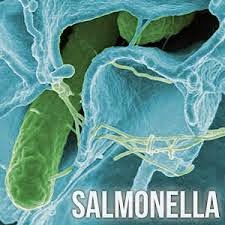Food poisoning is caused by contamination of food by some very harmful microorganisms (pathogens). Illnesses and deaths caused by food poisoning occurs when sufficient numbers of these organisms, or their toxins, are present in the food we eat.
Considering the number of deaths caused each year, worldwide, by food-borne diseases, it is an indication that these pathogens possess very dangerous features which are highly detrimental to the human health. This why medical and health organizations warn that high standards of food hygiene should be maintained when storing, handling and preparing food. You need to seriously beware of these culprits:
CAMPYLOBACTER.
Campylobacter is a bacterium that causes acute diarrhea. Transmission usually occurs through ingestion of contaminated food, water, or unpasteurized milk, or through contact with infected infants, pets, or wild animals. Campylobacter infection is a serious health infection, especially in those with weakened immune systems. In rare cases, campylobacter infection can cause additional problems such as reactive arthritis or brain and nerve problems. Occasionally, these problems occur after the diarrhea has stopped. Symptoms of campylobacter include: diarrhea (which is sometimes bloody), nausea and vomiting, abdominal pain and/or cramping, malaise (general uneasiness) and fever.
SALMONELLA.
Salmonella is a bacterial infection that can be passed on to humans from domestic and wild animals, including poultry, pigs, cattle, and pets. But most often, it is caused by drinking unpasteurized milk or by eating undercooked poultry and poultry products such as eggs. Any food prepared on surfaces contaminated by raw chicken or turkey can also become tainted with salmonella. Less often, the illness may stem from food contaminated by a food worker.
Salmonella is unique in its own way of harming, in that it can escape from the intestine and go into the blood and travel to other organs. It may become a chronic infection in some people, who can be symptom-free yet capable of spreading the disease to others. Although most people recover completely (which sometimes can take several months), salmonella infection may cause a condition known as REACTIVE ARTHRITIS in a small percentage of people. This results to joint pain, eye irritation, and pain when urinating. The joint pain may develop into chronic arthritis.
Symptoms of salmonella include acute onset of: fever, abdominal pain, diarrhea, nausea, vomiting (sometimes) and probable loss of appetite. Salmonella infection rarely causes death, although it can occur in the very young, very old, or among those who have compromised immune systems.
SHIGELLA.
Shigella is a bacteria generally transmitted through faeces. It causes dysentery, an infection of the intestines that causes severe diarrhea. The disease generally occurs in tropical or temperate climates, especially under conditions of crowding, where personal hygiene is poor. Symptoms of shigella include: bloody diarrhea, fever, nausea, vomiting and cramps.
The shigella bacteria from stools of infected people can be passed to others if hygiene or hand-washing habits are inadequate. To help prevent transmitting the infection, always wash hands thoroughly after using the bathroom or changing diapers.
For More information, Read:
E. Coli O157.H7 and Food poisoning.
Listeria and Food poisoning.
Botulism and Food poisoning.
Culprits, as we know, don't want the best for us, we must be the one to ensure maximum protection for ourselves. Be sure to live healthy.
Read Symptoms and Prevention of Food poisoning. to know how to be better protected against food poisoning.
SOURCE:
WebMD





No comments:
Post a Comment